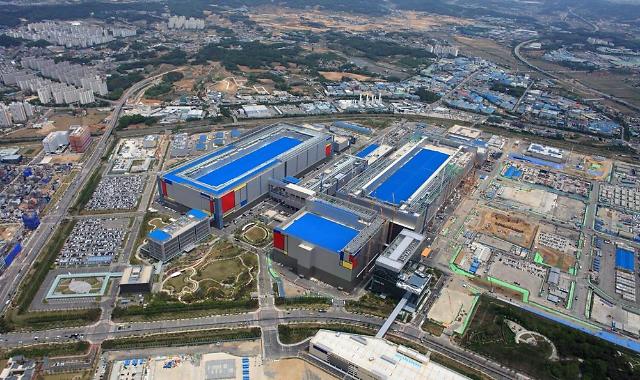According to the Samsung Electronics business report on the 9th, the production capacity of Samsung Electronics’ memory semiconductors in 2020 recorded 1.23 trillion units in terms of 1Gb chips, an increase of 24.5% from the previous year (98.81 billion units).
In addition, Samsung Electronics actually produced 1.2 trillion units, the same amount as its production capacity, and recorded more than 1 trillion memory semiconductors. Samsung Electronics has been actually producing memory semiconductors with production capacity for 17 consecutive years from 2004 to last year.

[아주경제 그래픽팀]
It is the first time that Samsung Electronics has exceeded 1 trillion units of annual production capacity and production performance based on 1Gb chip conversion. Since Samsung Electronics is at the forefront in both DRAM and NAND flash fields, it is natural to write the world’s first record together.
According to Trend Force, a market research institute, Samsung Electronics’ global market share based on sales in the fourth quarter of last year was 42.1% for DRAM and 32.9% for NAND flash.
This is more than 10%p higher than SK Hynix (29.5%) and Japanese Kioxia (19.5%), which ranked second in each category.
In addition, Samsung Electronics actually operated all 73,248 hours of the 7,3248 hours it could operate in the memory business last year, and continued this year’s 100% utilization rate, which has been in operation since 2010.
In its business report before 2010, Samsung Electronics recorded the facility operation hours of the semiconductor business combined, and from 2010, the facility operation hours of the memory business were separately indicated.
According to Samsung Electronics, the facility’s operating time was calculated by multiplying the operating days (365 days), operating hours (24 hours), and the number of production lines, taking into account the characteristics of the 24-hour 3-shift operation. In particular, it is noteworthy that the Pyeongtaek line 2 continued to operate in August of last year, and the operation rate remained unchanged at 100%.
It is analyzed that the production of the third-generation 10-nano class (1z) LPDDR5 mobile DRAM that applied the extreme ultraviolet (EUV) process for the first time in the industry is proceeding without a hitch.
As Samsung Electronics’ memory semiconductor production capacity is expanding year by year, production capacity and production performance are expected to expand this year as well.
In fact, following the LPDDR5 mobile DRAM in August of last year, the next-generation V-NAND line will also be operated in earnest on the 2nd Pyeongtaek line from the second half of this year.
Continuous investment is also being made. Samsung Electronics invested 32,891.5 billion won in new, expanded, and supplemented semiconductors last year. During this period, the amount of investment used by the DS division, including displays, amounted to 38,496.9 billion won.
In addition, Samsung Electronics has pledged to strengthen the competitiveness of its flagship businesses this year by expanding and converting the fleet of memory and system semiconductors and investing in infrastructure.
While the global semiconductor industry is predicted to enter a boom this year, it is analyzed that if Samsung Electronics continues to expand production lines, continue investment, and achieve 100% utilization, it will firmly maintain the’No. 1 global memory semiconductor’ this year.
